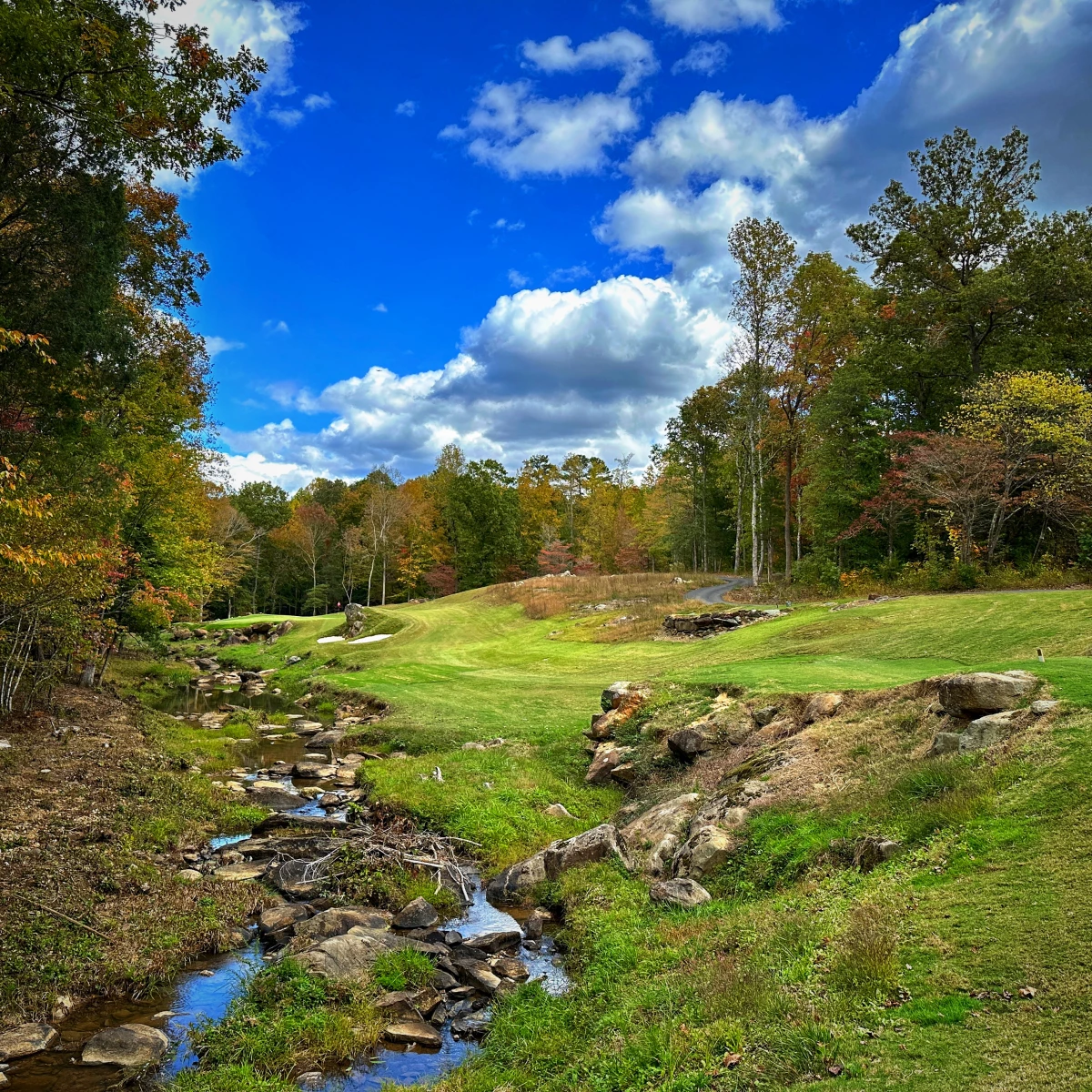As an already golf-obsessed little kid, as soon as I laid eyes on two Mike Strantz golf courses – Caledonia Golf & Fish Club and True Blue Golf Club, that was it for me. I was destined to be an architecture nerd. During family trips to Pawleys Island, S.C., occasional rounds at Caledonia and True Blue became highlight events. They were the first golf courses that ever kept me up at night in anticipation.
Even – perhaps especially – to a child, Strantz’s unabashed playfulness is a revelation. His courses stick to you. The features that a golfer encounters at a Mike Strantz golf course are so often unique – even bizarre – that they are easy to remember long after the round.
Strantz, who passed away from oral cancer in June of 2005 just weeks after his 50th birthday, looked at land as sculptor first, sportsman second. He and his Maverick Golf Design team whipped acres of dirt like one might bully lumps of clay into heaving fairways and greens that evoke the ocean and lemon meringue pie. His bunkering as wild as his scraggly hair and handlebar mustache, often unkempt, unruly and unforgettable.
Like many great artists, Mike Strantz was controversial. His courses generate heated debate; some golfers argue his more confrontational designs stretch golf design to its breaking point. But there is little debating the visual feast on display throughout his portfolio.
Strantz’s unsparing approach sometimes even vexed the people charged with caring for his courses. In one telling anecdote, a superintendent asked Strantz how he was supposed to maintain a particularly severe feature on a course. He replied gruffly, “That’s your f—-ing problem!”
First discovered by architect Dana Fry, Strantz’s main early-career years were spent under Tom Fazio. Some of the most visually intriguing courses under the Fazio name bear Strantz’s influence, including Lake Nona and Black Diamond Ranch in Florida and Wachesaw Plantation Club just south of Myrtle Beach. Strantz’s eye for expressive shaping and bunker construction elevates those and other Fazio courses.
Strantz hit his stride when he went solo. Caledonia (1994) is his most accessible original design, but the size of many of its greens and its use of sandy wastes and deep formal bunkers hinted at what was to come. Two courses near Williamsburg, Virginia, followed: Stonehouse and Royal New Kent (1996). At the latter, Strantz went whole-hog on adapting the wild look of Ireland’s links golf courses to a rolling piece of inland property. Royal New Kent’s first hole is one of the wildest openers in golf – a blind tee shot into a valley surrounded by faux dunes and a semi-blind approach uphill to an enormous table-top green – and scarcely lets up from there.
Strantz’s best courses are in the Carolinas, punctuated by Tobacco Road Golf Club (1998), which sits half an hour north of Pinehurst and light years away in style. On 230 acres of former sand mine, Strantz seemingly set out to break as many conventions as possible. Surging landing zones, massively sculpted greens and off-fairway areas that somehow invoke both North Carolina’s Sandhills and Mars come together in a weird alchemy that produces one of golf’s few truly singular experiences.
6 original Mike Strantz designs you can play
Golf’s recent resurgence in popularity could not have come at a better time for Mike Strantz’s publicly accessible courses. Both of his Virginia designs were closed at times in the late 2010s, and their permanent demises would have been huge losses for intrepid golfers and for course design as an art form. Luckily, new ownership at both courses and a surge of new visitors has reversed both courses’ fortunes.
A similar story transpired at Tot Hill Farm (2000), a Strantz course an hour north of Pinehurst on the edge of the vast Uwharrie State Forest. Whereas sand and pine was Strantz’s medium at Tobacco Road, he worked in stone and hardwood at Tot Hill Farm. A comprehensive restoration project in 2024 included significant tree removal that the course had always needed, due to mediocre turf conditions. What was once an underfunded and struggling companion to Strantz’s masterpiece 40 minutes down the road is now a worthy companion and a must-play.
Strantz’s premature passing adds a sense of what-if to his shooting-star design career. Following the private Bulls Bay Golf Club (2002) outside of Charleston, S.C., his highest-profile project – a redesign of Monterey Peninsula Country Club’s Shore Course – would be his last, completed shortly before his death, well after he had lost the ability to speak due to his cancer. The last quarter-century – and especially the last decade – would surely have provided him with opportunities to create more marvels.
Strantz’s influence is immortal. Not only do his existing designs draw giddy golfers, but the current golf industry includes several architects who cite him as an influence. The Maverick’s swagger lives on in many bold contemporary designs like’ Landmand Golf Club in rural eastern Nebraska, where Tad King and Rob Collins took a hilly site above soy and corn fields and draped huge greens, epic bunkers and vast fairways between expanses of long native grasses. The shaping of Landmand’s enormous greens and cavernous bunkering reminds of Strantz’s own rugged aesthetic, but its best tribute to the Maverick approach is its lack of inhibition. King Collins executed their vision to the hilt. It is the least self-conscious golf course I have played that was built since Strantz’s passing.
Mike Strantz’s golf courses were not perfect, but there is little denying their full commitment to a vision. Anyone in a creative field yearns for full freedom, and beholding Strantz’s dynamic playing fields, and those he inspired, fills golfers with excitement and gratitude.
King Collins bold work at Landmand Golf Club often reminds of Mike Strantz. Tim Gavrich/GolfPass






